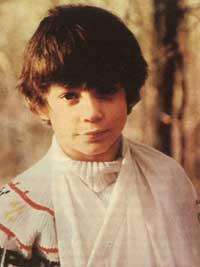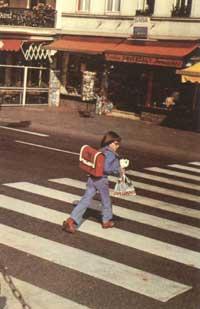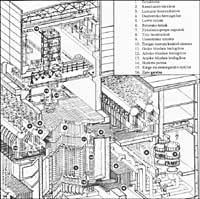Accidents in childhood
1989/09/01 Agirre, Jabier - Medikua eta OEEko kidea Iturria: Elhuyar aldizkaria
Currently, and for several years, accidents are the FIRST AND MAIN CAUSE OF INFANT MORTALITY, in children from 1 to 15 years for other causes (infectious diseases, birth defects, etc.) Overcoming totally. Even more: accidents cause more deaths at this age than all infectious diseases at a time.
In general, accidents are considered those that require hospitalization, suspension of school tasks or medical care. This group also includes out-of-home accidents (especially traffic), but this does not take away the number of accidents.

By age groups, the most common types of accidents are:
- Children under one year: those who have occurred before schooling (drowning, falls, burns and intoxications).
- From 1 to 4 years. Most of the accidents occur within the house, in this case within the school. Intoxications at this time (cleaning aids, medicines, gums, plasticine, etc.) and traumatisms (falls, blows, etc.) These are the main reasons.
- From 5 to 15 years. In this age group most of the accidents occur outside the house: traffic accidents, at school occurred during recreation, etc.
Why are children's accidents occurring?
- The child needs to move, play. You can't be still and, of course, ...
- Their psychomotor development is still not enough: they are clumsy to do some things or movements.
- He is curious to do new things, experiment, and on the other hand he has no knowledge of risk.
- Society is organized in a different way and often the capacities (and desires) of the child are not adapted to that organization.
- Lack of awareness and knowledge of parents and educators.
Main types of accidents
There are many and very different accidents that can occur in childhood. Below are the main classified by importance:
- Falls, hits
- Traffic accidents (traffic, roundtrip)
- Poisoning, poisoning (medicines, cleaning products, ...)
- Burns (fire, lighters and poxpoles, electric current)
- Choking (choking, choking, etc.)
- Electrocutions Electrocutions
Where and how do these accidents occur?
- Falls on the stairs or stumble with something (toy, chair, wires, ...) and falling or playing. Special risk for windows, balconies, etc.
- As for traffic accidents, it is important that children know as soon as possible, to the extent possible, the main rules of circulation in the street. On the other hand, on the roads and trucks of the school environment, proper signaling should be established and special protective measures taken.
- Poisoning can occur with any topic. Why? For inadequate storage of these substances, since in some bottle that the child can use dangerous substances are stored (e.g. a bottle of gaseous bleach or a solvent in a bottle of water, ...).
- The main cause of burns is usually distraction. Or that the child is too close to a heat source (kitchen, oven) or when the child is larger, he manipulates poxpoles, lighters or similar things.
- The strangulations can be very varied and occur in different places: by ingestion of small objects (toys or parts of them), playing with plastic bags, in the pool, in the river or in the sea. And also with strings, cables, blinds, bars, etc.
- Electrocutions. They are due to poor state electrical installation (loose, poorly tied and insulated cables, outdoor plugs, etc. ). ).
What to do with these accidents?

First, and it is essential, proper prevention.
That is, to discard or avoid, at least, those who are in our hands of the various factors mentioned.
Here the problem of safety enters the school and that of medical or health care.
1. About school safety you can see several points:
a) Special responsibility of the dangerous points of the schoolAccesses (traffic problem). Emergency facilitiesDoors (best opening inwards)Leisure space (pavements, swings and similar, barriers)Toilets (cleaning, water installation) b) School electrical installation, gas installations, heating, etc. They should be analyzed and reviewed frequently to keep them in good condition. On the other hand, they have the appropriate protection or coverage measures (cables, plugs, corners or cantons, etc. ). ).
c) The bus requires special attention.
2. On the other hand, although medical care that can be given at school is not excessive, it is always convenient for someone to have information about first aid. In any case, it should be clear in a center what type of insurance or institution can count on the help of a child after something happened: where to take it, etc.To perform the first aids and first cures it is necessary (or at least very convenient) to prepare a specific room for it: a stretcher or an apaisado, a sketch. Gases. Bandages of different widths Esparadrapo. Tiritas. Cotton Scissors. Tongs. Alcohol thermometer. Oxygenated water. Mercromina For all of this, of course, it is convenient for there to be a responsible (or a team taking responsibility for all of this) in each school or center.
3. Finally, we cannot forget the importance of HEALTH EDUCATION as a complement to all the above. Students should be taught adequate habits and behaviors, causes and prevention of accidents, simple traffic rules, etc.

Gai honi buruzko eduki gehiago
Elhuyarrek garatutako teknologia





